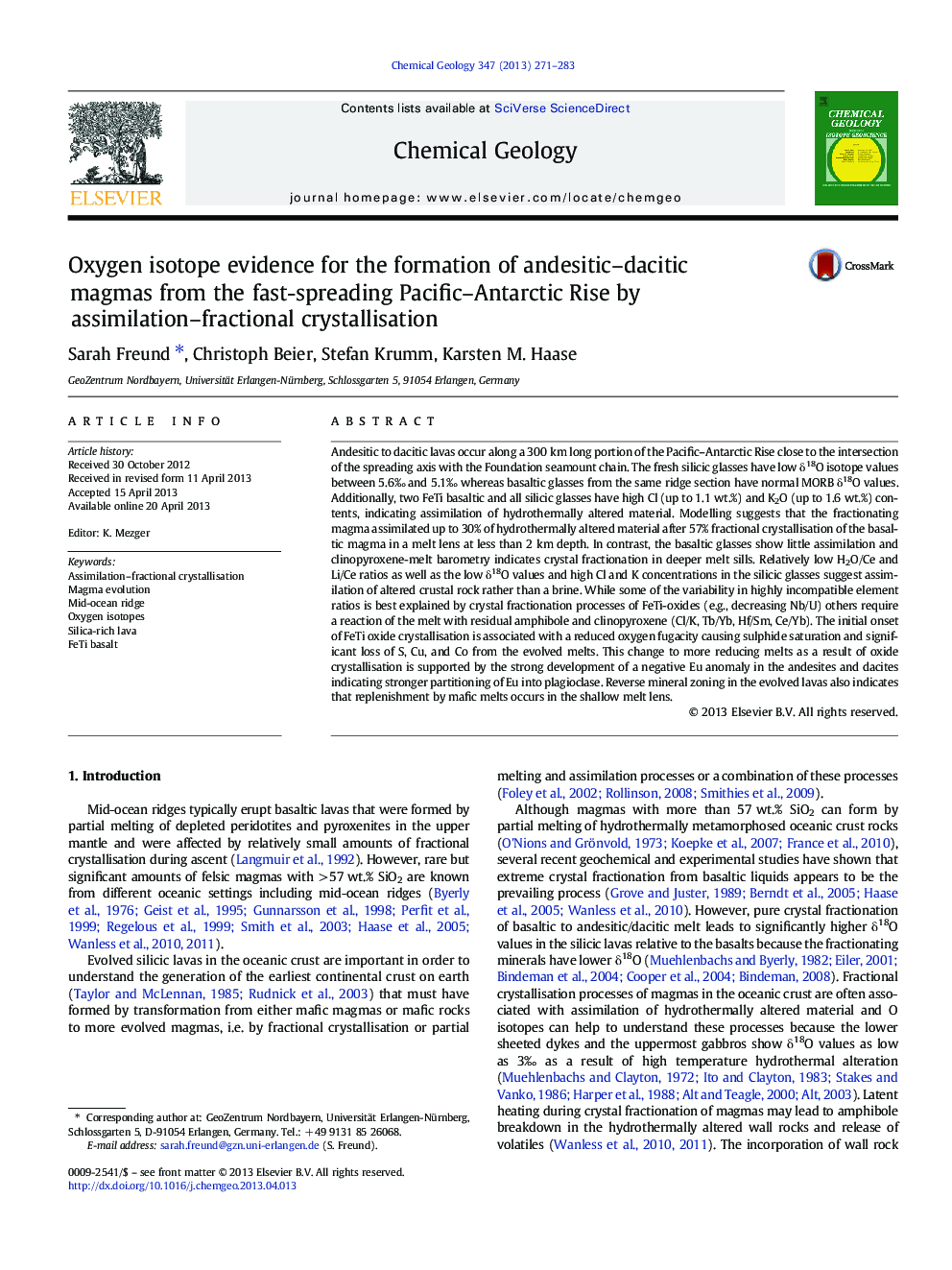| کد مقاله | کد نشریه | سال انتشار | مقاله انگلیسی | نسخه تمام متن |
|---|---|---|---|---|
| 6436988 | 1637621 | 2013 | 13 صفحه PDF | دانلود رایگان |
• FeTi basalts, andesites and dacites occur adjacent to MORB at the Pacific–Antarctic Rise.
• Fresh evolved lavas have lower δ18O values than expected.
• Silicic lavas show multiple evidence for AFC, basalts do not.
• Crystallisation within two melt lenses, one in the deep and one in the shallow crust
Andesitic to dacitic lavas occur along a 300 km long portion of the Pacific–Antarctic Rise close to the intersection of the spreading axis with the Foundation seamount chain. The fresh silicic glasses have low δ18O isotope values between 5.6‰ and 5.1‰ whereas basaltic glasses from the same ridge section have normal MORB δ18O values. Additionally, two FeTi basaltic and all silicic glasses have high Cl (up to 1.1 wt.%) and K2O (up to 1.6 wt.%) contents, indicating assimilation of hydrothermally altered material. Modelling suggests that the fractionating magma assimilated up to 30% of hydrothermally altered material after 57% fractional crystallisation of the basaltic magma in a melt lens at less than 2 km depth. In contrast, the basaltic glasses show little assimilation and clinopyroxene-melt barometry indicates crystal fractionation in deeper melt sills. Relatively low H2O/Ce and Li/Ce ratios as well as the low δ18O values and high Cl and K concentrations in the silicic glasses suggest assimilation of altered crustal rock rather than a brine. While some of the variability in highly incompatible element ratios is best explained by crystal fractionation processes of FeTi-oxides (e.g., decreasing Nb/U) others require a reaction of the melt with residual amphibole and clinopyroxene (Cl/K, Tb/Yb, Hf/Sm, Ce/Yb). The initial onset of FeTi oxide crystallisation is associated with a reduced oxygen fugacity causing sulphide saturation and significant loss of S, Cu, and Co from the evolved melts. This change to more reducing melts as a result of oxide crystallisation is supported by the strong development of a negative Eu anomaly in the andesites and dacites indicating stronger partitioning of Eu into plagioclase. Reverse mineral zoning in the evolved lavas also indicates that replenishment by mafic melts occurs in the shallow melt lens.
Journal: Chemical Geology - Volume 347, 6 June 2013, Pages 271–283
